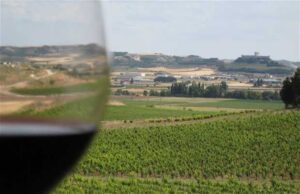

Unbridled Taste and Adventure
Discover the taste of Madrid that is more than just a vibrant city. Here, the wines reflect the heritage of the place. Imagine yourself savoring


Director of Wine Tours Madrid.
Wset 3 and Senior Viticulture Technician.


Recent studies have shown that the origin of wine is older than we thought. One could speak of eleven thousand years of history of a beverage that has accompanied a large part of humanity since the origins of civilization.
Well, those first wines produced in the Caucasian area had something in common with some wineries in southern Europe that still today continue to make their wines in earthenware jars, the same material used by those early winemakers. At first, human beings, so dependent on water for their survival, had to transport it in animal skins or in earthenware vessels. Those primitive containers made it possible to store food and liquids, to protect them from animals and microorganisms, to protect them from oxygen and temperature and also to move them easily. Possibly in one of those primitive jars is where originally some cereal grains fermented by containing rainwater and gave rise to beer. It is also possible that the first wines of mankind, if not fermented, were kept and drunk in clay containers.
Nowadays, countries like Georgia, Armenia, Greece, Italy, Spain or Portugal still keep centenary wineries where the vats are still the main deposits to produce wines. In our Madrid Wineries Tour you can enjoy some of these oenological jewels such as the centenary winery Jesús Díaz e hijos in Colmenar de Oreja or Bodegas del Nero in Chinchón. Until 70 years ago, the "tinaja" was the main container for the fermentation and preservation of wines in most of the southern Mediterranean area. Those places that did not have abundant wood or a seaport to obtain barrels, such as the southern plateau of Spain, continued to use clay to build gigantic wine vats. Focusing on the Spanish reality, the great wine-making centers in the southern half of the peninsula were Colmenar de Oreja and Villarrobledo in La Mancha, Cebreros in the Gredos Mountains and Torrejoncillo in Cáceres. This industry was eclipsed by the appearance of concrete in the 1930's. Concrete shares properties with clay such as certain porosity, thermal stability, versatility of shapes and the possibility of producing large volumes of liquid. However, concrete guaranteed the durability and resistance of the deposits as opposed to the fragility of clay.
Both tanks had the disadvantage of accelerating the oxidation of the wines once the spring heat arrived and for that reason almost all the areas where the "tinaja" has been the main oenological element have caves under the cellars. In these caves, like the ones we will be able to visit during our Tour to the Wine Region of Madrid, the wines were kept from March or April onwards and remained there until after the summer. The cellars in turn were prepared to collect the wines that could be poured from a broken jar and in many of them you can see buried tanks or even buried jars that were responsible for saving the wine from the jars that could eventually break.
Today there are still places like Colmenar de Oreja, Chinchón or the Sierra de Gata in Cáceres where the "tinaja" is still present in industrial and family wineries. The jar, with its conical or ovoid shape, allows wines to be clarified efficiently. In addition, due to its thermal stability, the clay does not allow drastic temperature changes inside, which favors the preservation of the wine.
In addition to the historical use, nowadays many prestigious winemakers use new amphorae for the elaboration of their most special wines. It is also a container widely used in biodynamic wines. Everything begins in the egg and the jars, with their ovoid shape, reproduce that origin of all things where wine is also born. In addition, the shape of the jar favors the fermentation dynamics by producing a certain movement of the pulp during alcoholic fermentation. As great fans of wines made in earthenware jars, we have designed our Tour to the Wine Region of Madrid in order to share with our customers the magic of wineries that, contrary to modern times where the industry fills the cellars with modern and artificial technology.


Discover the taste of Madrid that is more than just a vibrant city. Here, the wines reflect the heritage of the place. Imagine yourself savoring


The Wine Pleasure Promise is Wine Tour Madrid's commitment to each client. The wine tours in the region offer


The Adventure Among Vineyards awaits you behind every hill. Surprise yourself in every discovery with the wine tours near Madrid.
©2022 ALL RIGHTS RESERVED
WhatsApp us